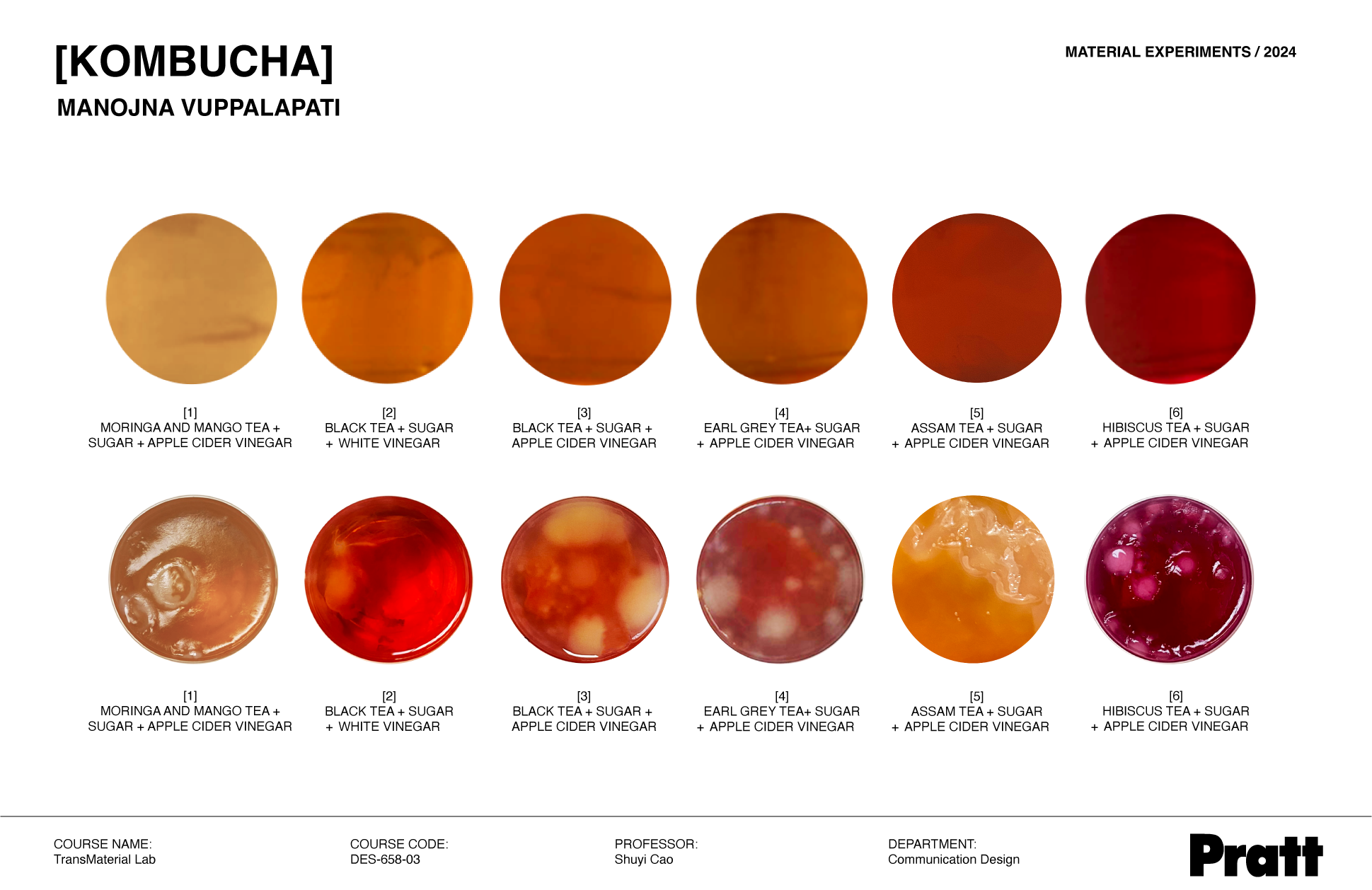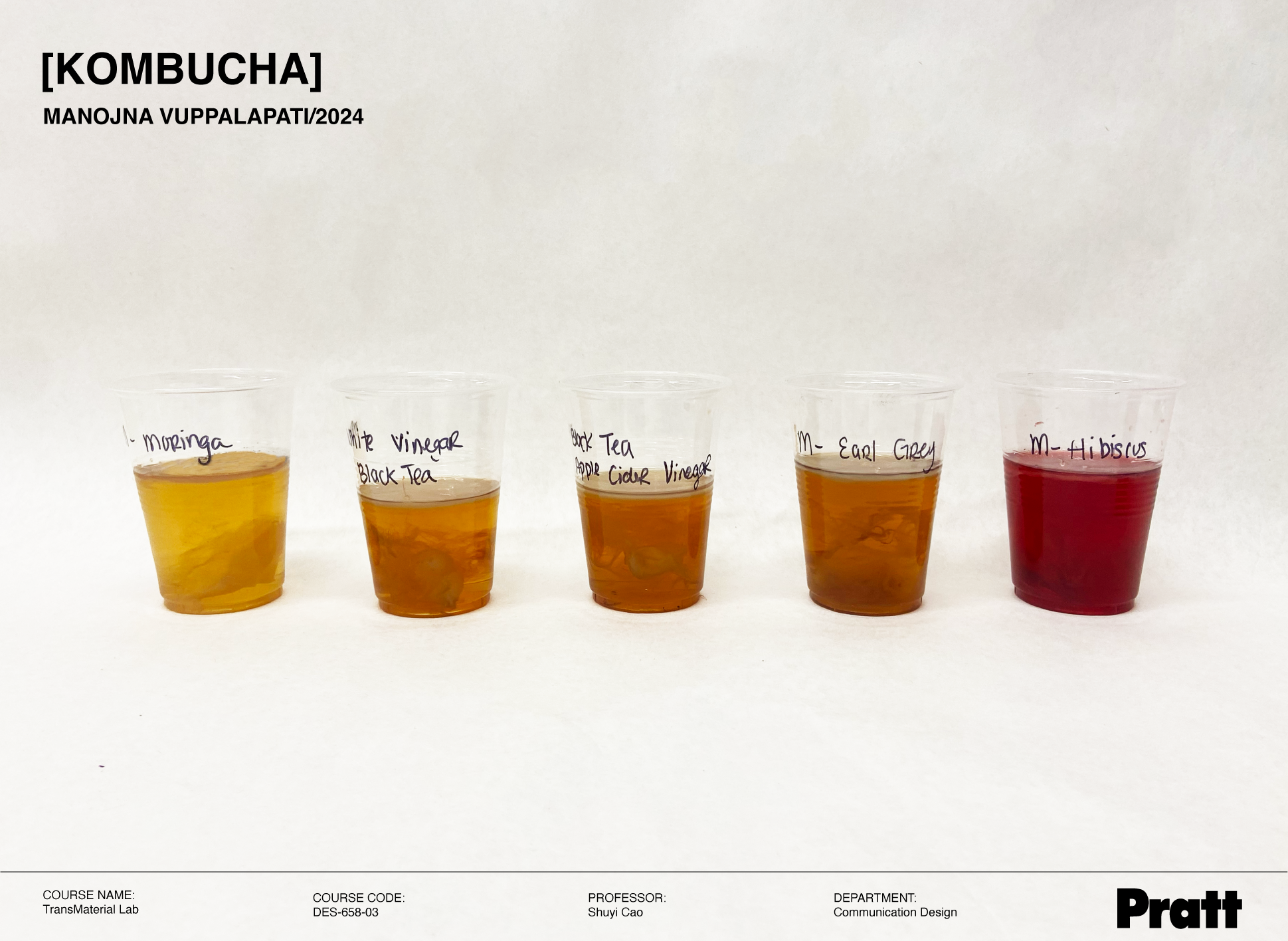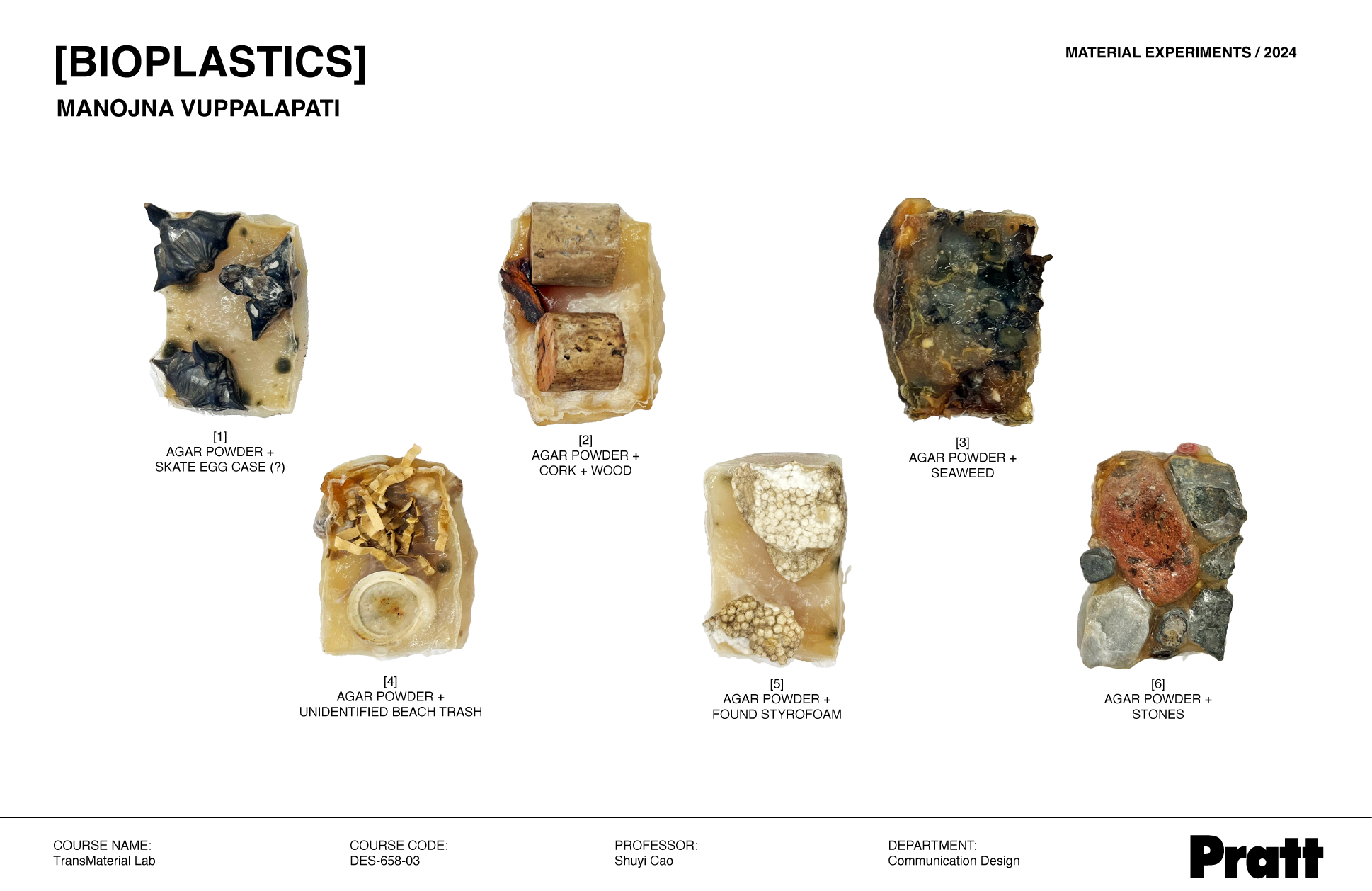
Manojna Vuppalapati
Materials: Kombucha
Ingredients: Moringa and mango tea, Black tea, Assam tea, Earl Grey, Hibiscus tea, Apple cider vinegar, White vinegar and SCOBY.
Processes: Boiling, steeping, cooling down, fermentation, drying
Tools: Small plastic cups, kettle, pot, aluminium foil, measuring cups and spoons
Materials: Mycelium
Ingredients: Paper scraps, Cork, Coffee grounds, Teabags and grounds, Eggshells, Mushroom roots and soil.
Processes: Adding the substrate, sterilizing, containing, letting it grow, baking
Materials: Bioplastics
Ingredients: Agar Agar, Gelatin, Glycerin, Pectin, Water, Skate eggshells, Wood, Seaweed, Styrofoam, Stones, Turmeric, and Artificial food dyes.
Processes: Boiling, stirring, dissolving, adding dried leaves and flowers, pouring, drying
Tools: Non-stick pot, spatula, silicone molds, mixing cup, measuring cups and spoons.
Materials: Kombucha
Ingredients: Moringa and mango tea, Black tea, Assam tea, Earl Grey, Hibiscus tea, Apple cider vinegar, White vinegar and SCOBY.
Processes: Boiling, steeping, cooling down, fermentation, drying
Tools: Small plastic cups, kettle, pot, aluminium foil, measuring cups and spoons
Materials: Mycelium
Ingredients: Paper scraps, Cork, Coffee grounds, Teabags and grounds, Eggshells, Mushroom roots and soil.
Processes: Adding the substrate, sterilizing, containing, letting it grow, baking
Materials: Bioplastics
Ingredients: Agar Agar, Gelatin, Glycerin, Pectin, Water, Skate eggshells, Wood, Seaweed, Styrofoam, Stones, Turmeric, and Artificial food dyes.
Processes: Boiling, stirring, dissolving, adding dried leaves and flowers, pouring, drying
Tools: Non-stick pot, spatula, silicone molds, mixing cup, measuring cups and spoons.
These experiments explored the potential of bioplastics, kombucha, and mycelium as sustainable biomaterials by varying ingredients and substrates. For bioplastics, I experimented with water, glycerin, and pectin ratios to test the material's flexibility and texture. The kombucha experiments used different teas, such as black, green, and hibiscus, along with various vinegars, to assess the thickness and color of the leather produced. Substrates like eggshells, coffee grounds, and tea grounds were tested for density and growth efficiency with mycelium. It’s fascinating how these experiments give drastic results through simple ingredient tweaks, highlighting the transformative potential of natural materials.



